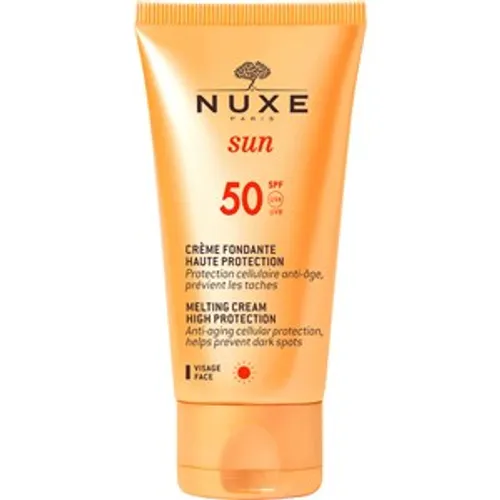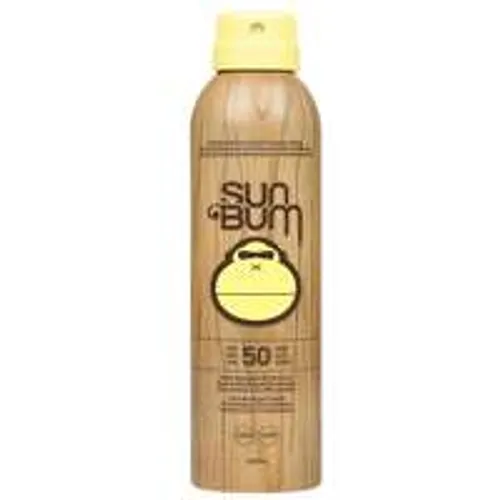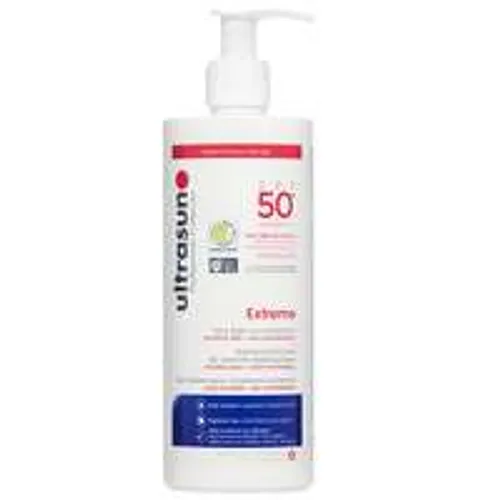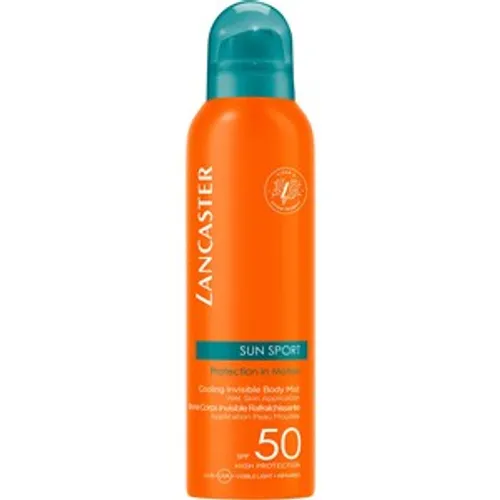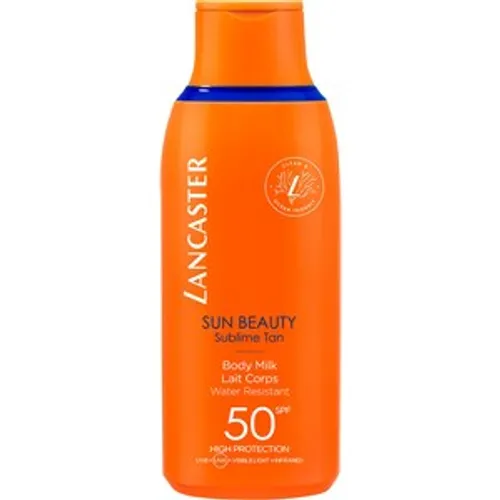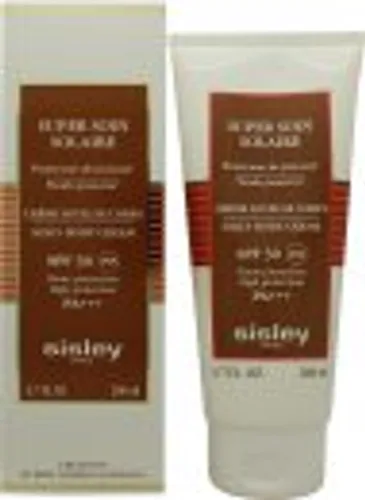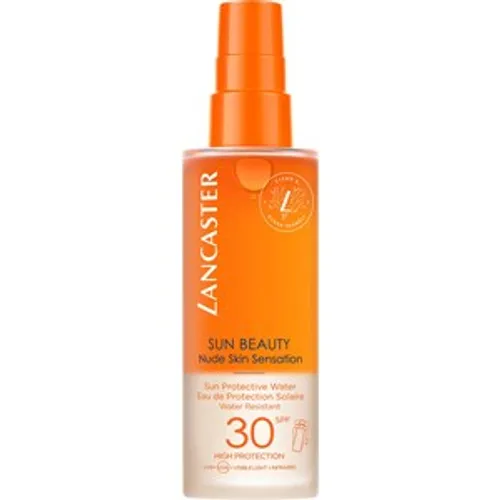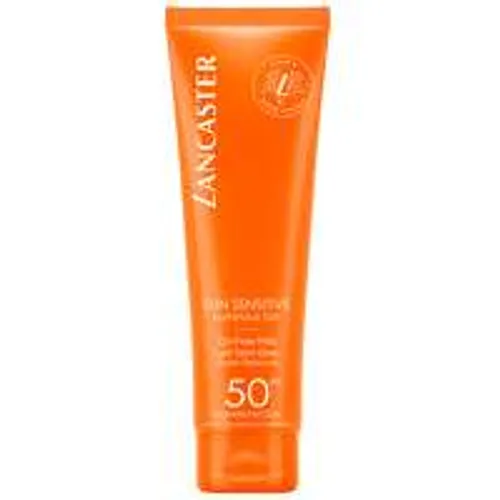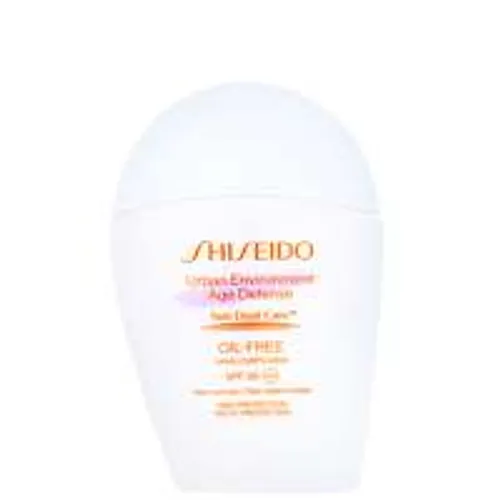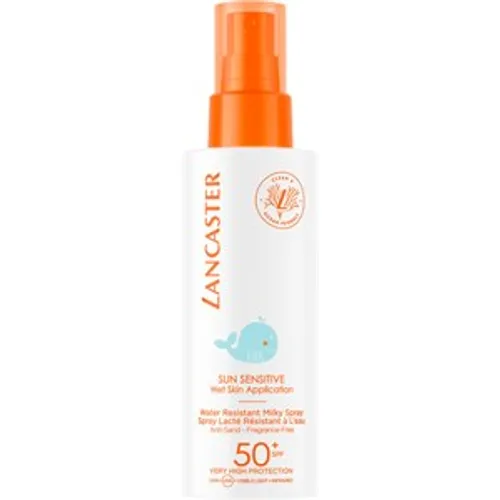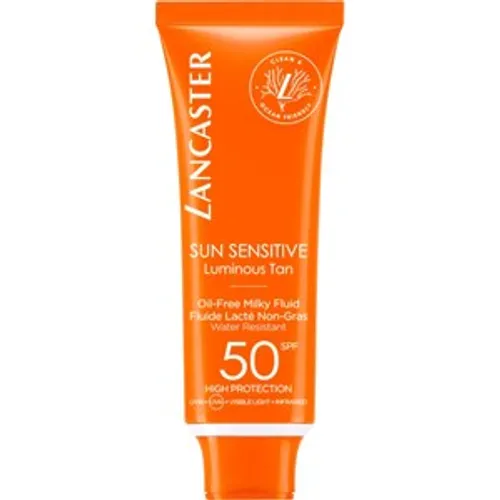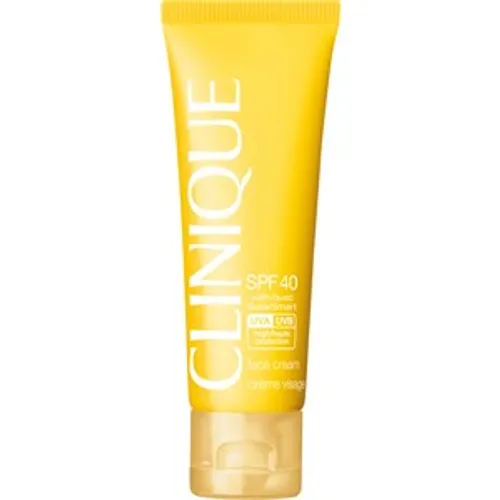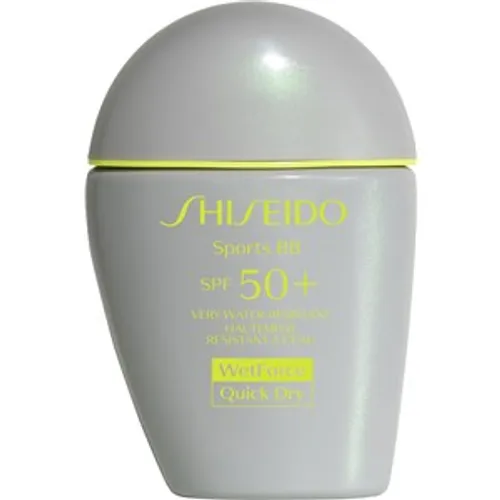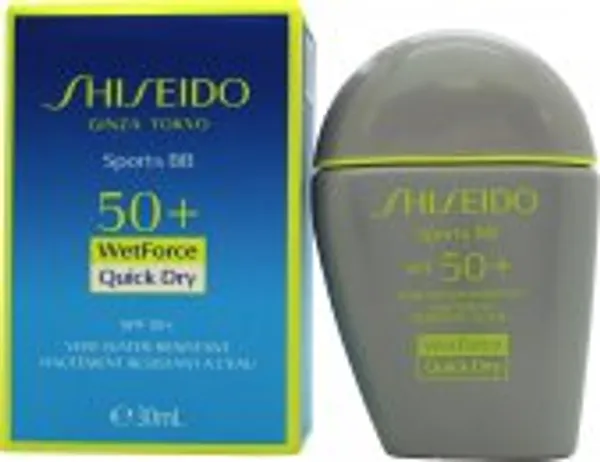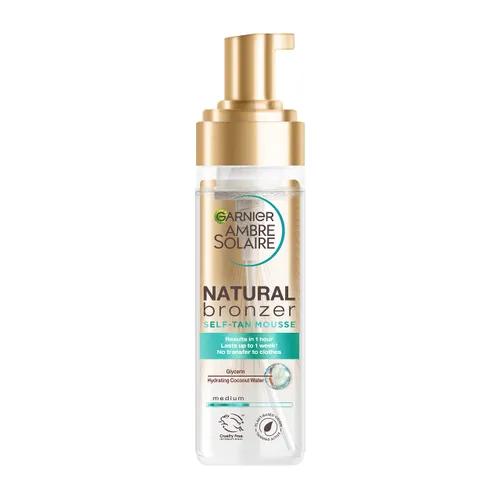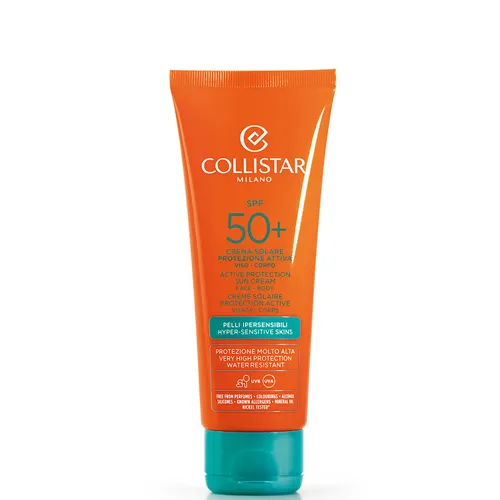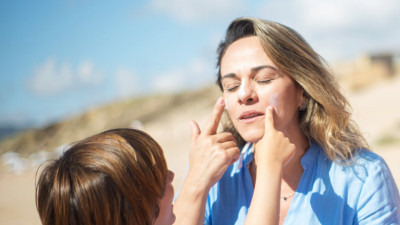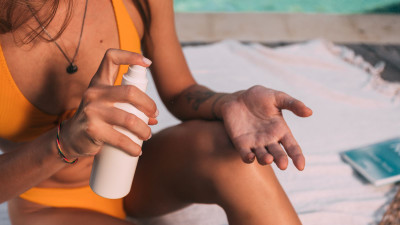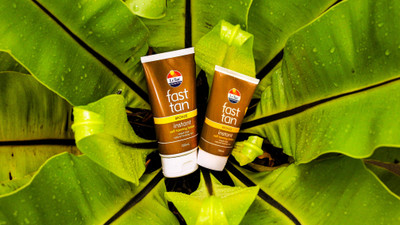Sun is rising, temperatures are soaring and all you want to do is grab your sunnies and head out. But wait! One of the biggest beauty faux-pas that many of us make is not wearing sunscreen when you’re not on vacation. Even the watery English sun can cause your skin to sunburn, with all its consequences. But what does SPF mean and why is it important? We tell you everything you need to know about SPF, how it works and what number is best for you to use.
What does SPF mean
SPF stands for Sun Protection Factor and the number indicates how well the sunscreen protects your skin against UV-B rays that cause sunburns. It’s not an indicator that says how long you can stay out in the sun! SPF indicates how much longer it takes untanned skin to redden with sunscreen compared to how long it takes to start getting red without it. The higher the SPF number, the less percentage of UV rays will reach your skin.
How does SPF work
The SPF indicates the length of time that your skin is protected against sunburn. In other words: the SPF is a multiplication of how quickly your skin gets sunburnt without using sunscreen. Let’s say that you haven’t used a sunscreen lotion and you get a sunburn within 5 minutes of sitting out in the sun. With a SPF 30, you’ll get a sunburn after 5 (minutes) x 30 (SPF) = 150 minutes. Are you over 120 minutes? Then it’s still a good idea to apply your sunscreen every two hours. Are you under 120 minutes? You then need to use a higher SPF!
Nowadays, SPF is not only used in sunscreen products. There are many moisturizers and makeup products with SPF on the market.
What is the difference between UVA and UVB rays
Sunlight contains ultraviolet (UV) radiation, which consists of different types of rays. The types of UV radiation that you may be most familiar with are UVA and UVB rays. To remember the difference between UVA and UVB, use the mnemonic: A = Aging and B = Burning.
UVA rays:
- Penetrate windows and clouds
- Cause your skin to age prematurely (wrinkles!)
- Are associated with some skin cancers
- Are more penetrating than UVB rays and affect cells deeper in the skin
- Indirectly damage your DNA
- Cause an immediate tanning effect and sometimes sunburn
UVB rays
- Are filtered by clouds and don’t penetrate windows
- Damage the outermost layers of your skin
- Cause most skin cancers
- Directly damage your DNA
- Overexposure leads to sunburns. (appears a few hours after sun exposure)
- To protect your skin from damage, it’s best to use a sunscreen that protects against both UVA and UVB rays. It’s better to be safe than sorry!
What SPF should I use
The SPF indicates the length of time that your skin is protected from sunburn. All skin types are different and have varying results from sun exposure. Remember: the SPF number is only a guide to its level of protection! Besides your skin type, other factors affect the level of protection, such as how much sunscreen you apply, the weather circumstances, how much you sweat, and how much you swim.
Skin type
Depending on your skin type, you can choose a sunscreen with SPF that protects you against sunburn and the effects of UV rays. The Fitzpatrick scale is a simple way of classifying different skin types and helps predict your overall risk of sun damage. The advised SPF is based on daily activities in the English summer sun. If you go on summer holiday and winter sports, the advise is to always use SPF 30 in these areas, no matter your skin type. The Fitzpatrick scale identifies 6 skin types.
Skin type 1
- Ivory skin colour
- Eye colour is light blue, light grey or light green
- Natural hair colour is red or light blonde
- When exposed to the sun: skin always freckles, always burns and never tans
- SPF advice: at least SPF 30
Skin type 2
- Fair or pale skin colour
- Eye colour is blue, grey or green
- Natural hair colour is blonde
- When exposed to the sun: skin usually freckles, burns often and rarely tans
- SPF advice: at least SPF 30
Skin type 3
- Fair to beige skin colour
- Eye colour is hazel or light brown
- Natural hair colour is dark blonde or light brown
- When exposed to the sun: skin might freckle, may burn and sometimes tans
- SPF advice: at least SPF 15
Skin type 4
- Skin colour is olive or light brown
- Eye colour is dark brown
- Natural hair colour is dark brown
- When exposed to the sun: skin doesn’t really freckle, burns rarely and tans often
- SPF advice: at least SPF 15
Skin type 5
- Skin colour is dark brown
- Eye colour is dark brown to black
- Natural hair colour is dark brown to black
- When exposed to the sun: skin rarely freckles, rarely burns and always tans
- SPF advice: at least SPF 10
Skin type 6
- Skin colour is deeply pigmented dark brown to darkest brown
- Eye colour is brownish-black
- Natural hair colour is black
- When exposed to the sun: skin never freckles, never burns and always tans
- SPF advice: at least SPF 10
Sun strength
How quickly you burn also depends on how strong the sun shines. In the summer the sun is a lot stronger compared to spring. The strength of the sun also indicates how much UV radiation will reach the earth. The UV index shows how much UV actually reaches the earth. The higher the number of the UV index, the quicker you’ll burn. A high UV index requires a higher SPF.
Location
In the UK, the maximum UV index value is 8. In countries around the equator, that maximum is a lot higher and can reach up to 15. Are you visiting one of these countries? Then use a higher SPF than you normally would at home.
Time of the day
It’s best to avoid being out in the sun between noon and 3 pm, since UV rays are the strongest in the middle of the day. If that’s not possible, please use at least a sunscreen with SPF 30 to prevent sunburn.
Amount of time outside
A nice long day at the beach requires different protection than a short walk to the supermarket. If you spend several hours in the sun, using a high SPF is essential. If you just go out for a short walk in areas with lots of shade, your average protection will do.
SPF for children: what should you use
For children up to 16, (kids) SPF 50 is best to use regardless of skin type and sun strength. Children’s skin is extra sensitive to UV radiation and needs special kids sunscreen for protection. Adults renew their skin every few weeks, but children’s bodies grow and their bodies may not have time to get rid of sun-damaged skin cells. The result: tiny scars deep within the skin cells that they carry with them for the rest of their lives. These scars are not visible to the naked eye, but they can increase the risk of skin cancer when they get older.
What does the SPF number mean
The SPF number says something about the amount of UVB radiation that the product absorbs. The lower the number, the more UV rays reach your skin and the higher the risk of sunburn.
- SPF 10 absorbs 90% of UVB rays
- SPF 15 absorbs 93% of UVB rays
- SPF 20 absorbs 95% of UVB rays
- SPF 30 absorbs 97% of UVB rays
- SPF 50 absorbs 98% of UVB rays
The difference between SPF 30 and SPF 50 may seem nil, but it’s actually quite big. With SPF 30 your skin absorbs 3% of UV rays, whereas SPF 50 only absorbs 2%. When you have very fair skin, that can make the difference between getting a tan or a sunburn.
Budget-proof SPF vs high-end SPF
You can always find your favourite sunscreen brands for less at SuperSales, but can you also pay less based on SPF? We’ve got great news for you! The price of an SPF 50 is almost the same as the price of an SPF 10. An SPF 50 sunscreen lotion might be a little more expensive than an SPF 20 or 30, but we are talking pennies. That tiny benefit doesn’t even come close to the risks that can be caused by unprotected sunbathing. It’s better to save money on the brand than the SPF.
Sunscreen myths and facts
We have listed the most common myths about sunscreen for you!
You can’t tan with SPF 50
SPF doesn’t have to do anything with tanning. With SPF 50 you have less chance of getting a sunburn and you’ll enjoy your tanned look longer!
Adults and children with dark-coloured skin don’t need to use sunscreen lotion
People with dark skin can get sunburned, although you may not notice it. To protect yourself from harmful UV rays, it’s best to always use sunscreen no matter your skin colour.
High-end brands are better than budget brands
High-end doesn’t necessarily mean better when it comes to sunscreen. Every sunscreen brand around the globe has to meet the same standards. The price difference between high-end and budget is mainly the packaging.
A high SPF only needs to be applied once daily
Whatever number of SPF you use, you should apply it every two hours for maximum protection. Even when you rarely burn, it’s still best to slather sunscreen on regularly.
You don’t have to use SPF when it’s cloudy
Clouds and shade only stop some UV rays. Actually, clouds and shade equal SPF 5. That’s not enough to be fully protected against harmful UV rays though.
A small amount of sunscreen is enough to cover your whole body
When it comes to sunscreen, a little does not go a long way. It’s best to use at least 30 ml at a time if you want to protect your skin against the sun. FYI: most people don’t even use half of that.
Checklist for sunbathing
- Slather on your sunscreen at least 30 minutes before you go out in the sun. That will give the sunscreen enough time to sink in.
- Always apply sunscreen every two hours, even when you rarely burn or use a high SPF.
- Reapply sunscreen after swimming, even if the bottle says it’s water-resistant.
- Avoid sitting in the sun between noon and 3 pm.
- Use plenty of sunscreen. Don’t be stingy and apply at least 30 ml at a time.
- Don’t leave your sunscreen bottle in full sunlight. The heat can reduce the SPF. Keep your sunscreen in a (beach) bag or cooler.
- Always use an aftersun after sunbathing. Aftersun restores your skin’s moisture balance and your tan will last longer.


